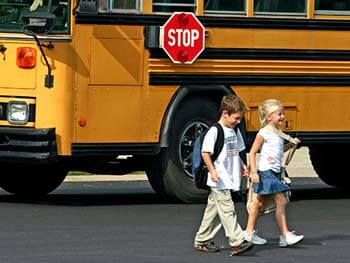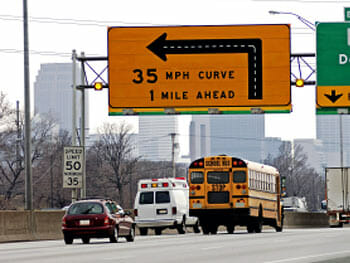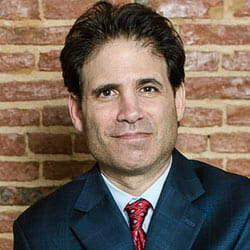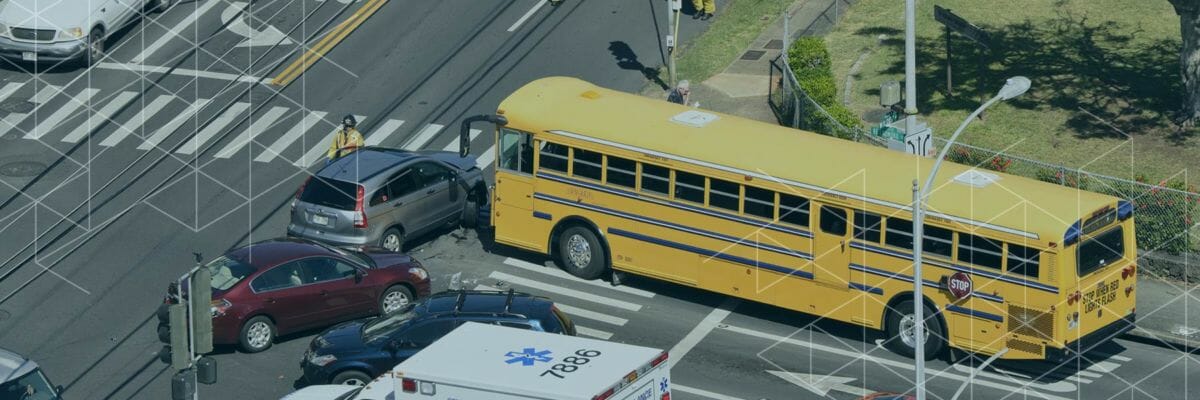 On November 1, 2016, a deadly school bus crash occurred in southwest Baltimore, killing six people. While no students were on the bus at the time, the crash raised serious questions about the safety of the school bus system in Baltimore. The National Transportation Safety Board (NTSB) requested an audit of school bus driver screening procedures after the crash, an audit that is off to a slow start.
On November 1, 2016, a deadly school bus crash occurred in southwest Baltimore, killing six people. While no students were on the bus at the time, the crash raised serious questions about the safety of the school bus system in Baltimore. The National Transportation Safety Board (NTSB) requested an audit of school bus driver screening procedures after the crash, an audit that is off to a slow start.
Nationally, between 2005 and 2014, 1,332 people died in school transportation-related accidents; that’s an average of roughly 133 deaths each year. Many of the deaths (71 percent) happened in other vehicles involved in the crash. In total over the time period, 304 children aged 18 and younger died in all school transportation-related accidents.
While the number of children dying in school transportation accidents may appear to be small, if you are a parent with a child who rides a bus to school, you should consider informing yourself about the ins and outs of school buses and their regulations.
General School Bus Regulations
School buses range from type A to D, with D being the largest. Type C is the most common and the type we are most likely to call to mind when we think of a school bus; around 70 percent of school bus sales were type C in 2014. Bus types A and B are the smallest; type A can hold as few as 10 passengers. Type D, the largest, can hold as many as 90.
Both federal and state regulations can apply to school buses and their operation. Briefly, these regulatory areas include:
- Inspections. Federal regulations require regular inspections. States can also set their own inspection requirements. In Maryland, the Motor Vehicle Administration requires that buses be inspected three times yearly. Something that will expedite the inspections is the new electronic system that went into effect during 2017, replacing the old paper-based system. Maryland has 9,000 school buses in operation.
- Vehicular standards. The federal government has certain standards regarding the protection of persons who ride school buses should a crash occur.
- School bus drivers. States can set regulations regarding the training for school bus drivers, such as entry-level training requirements and establishing any necessary refresher training. In Maryland, driver licensing requirements specify both physical and mental requirements that must be met in order to be licensed to drive a school bus. In the southwest Baltimore crash, the driver allegedly suffered from multiple health problems that caused blackouts. According to Maryland state law, someone with his alleged health problems should not have been driving a school bus.
School Bus Accidents: Who’s Responsible?
As with many types of accidents, it can be difficult to determine who is at fault. If your case involves a public school, the situation can become quite complicated, because a public school is part of the government. Cases brought against the government have special rules.
However, school buses are also used by private organizations, such as churches and private schools, to transport children. Other factors might also come into play, such as the bus’s condition or even an unsafe bus stop.
Some examples of those who might be responsible for a school bus accident are:
- The bus driver
- The school district
- The private organization (church, non-public school, etc.) that owns and operates the bus
- The private company that owns and operates the bus, if it was contracted to provide transportation
- The company responsible for maintaining and repairing the bus
- The manufacturer of the bus
- The manufacturer of the bus’s parts
- The other vehicle’s driver, if one was involved
- The other vehicle’s owner, if different from the driver
- The government entity responsible for the roadway.
If your child is injured and it is determined that you have a case, you can pursue damages such as:
- Current and future medical expenses, including therapy and rehabilitation
- Home health care and long-term care
- Special equipment needed to accommodate disability and disfigurement
- Lost future income and earnings capacity (adults can also pursue lost current income)
- Pain and suffering, both physical and mental
- Reduced quality of life.
School Bus Safety: Avoiding Accidents
 Because they carry children, school buses are heavily regulated. Despite the fact that they usually don’t have seat belts, school buses are designed to be very safe should a crash occur. They are often safer than your passenger vehicle. But that fact doesn’t account for human error or sheer negligence. While you don’t have control over the licensing of the driver or what happens on the school bus, you can take some precautions of your own in order to avoid potential disaster:
Because they carry children, school buses are heavily regulated. Despite the fact that they usually don’t have seat belts, school buses are designed to be very safe should a crash occur. They are often safer than your passenger vehicle. But that fact doesn’t account for human error or sheer negligence. While you don’t have control over the licensing of the driver or what happens on the school bus, you can take some precautions of your own in order to avoid potential disaster:
- Teach your child safe behaviors for waiting at the bus stop. Children should remain at least six feet from the curb and not run, play, or roughhouse at the stop.
- Get your child to the bus stop a few minutes early. A child rushing heedlessly for a bus can turn into a tragedy.
- Tell your child how to get on and off the bus safely. Children should always wait until the bus is completely stopped and the driver says it’s all right to board before they move toward the bus. Remind your child to use the handrails when getting on or off the bus.
- Make sure your child knows how to be safe around the bus. They should never walk behind the bus. If the child must cross in front of the bus, they should make eye contact with the driver first, then cross at least ten feet in front of the bus. Tell your child not to try to pick up anything they might drop. Instead, they should tell the driver right away about the dropped object and wait for instructions.
When it comes to school bus accident cases, other factors can also come into play, such as state caps on damages for personal injury and statutes of limitations. Should your child or other loved one have suffered an injury in a school bus accident, considering legal assistance at your earliest convenience could be a wise move.
We’re Listening. How Can We Help You?
The safety of children should be the top priority of those in and outside the home, including teachers, bus drivers, and school officials. However, if someone such as a school bus driver, bus owner, maintenance company, or other related person or entity chooses to act negligently, a young child may be the one to pay the price. Maryland child injury lawyer Steven H. Heisler understands how devastating any accident can be for a child to experience and wants to help Maryland families obtain the compensation their child needs to recover. Interested in more information about whether you have a valid personal injury claim? Contact Baltimore attorney Steven H. Heisler today for a free case consultation at 1-410-625-4878, or use our online contact form.

Attorney Steve Heisler
Steve Heisler decided in 1996 that he was going to focus his law practice exclusively on injury cases. Since then, he has been representing injured people against insurance companies, disreputable medical practitioners and Big Pharma, and doing it with compassion, honesty and level-headed rationality. [ Attorney Bio ]


